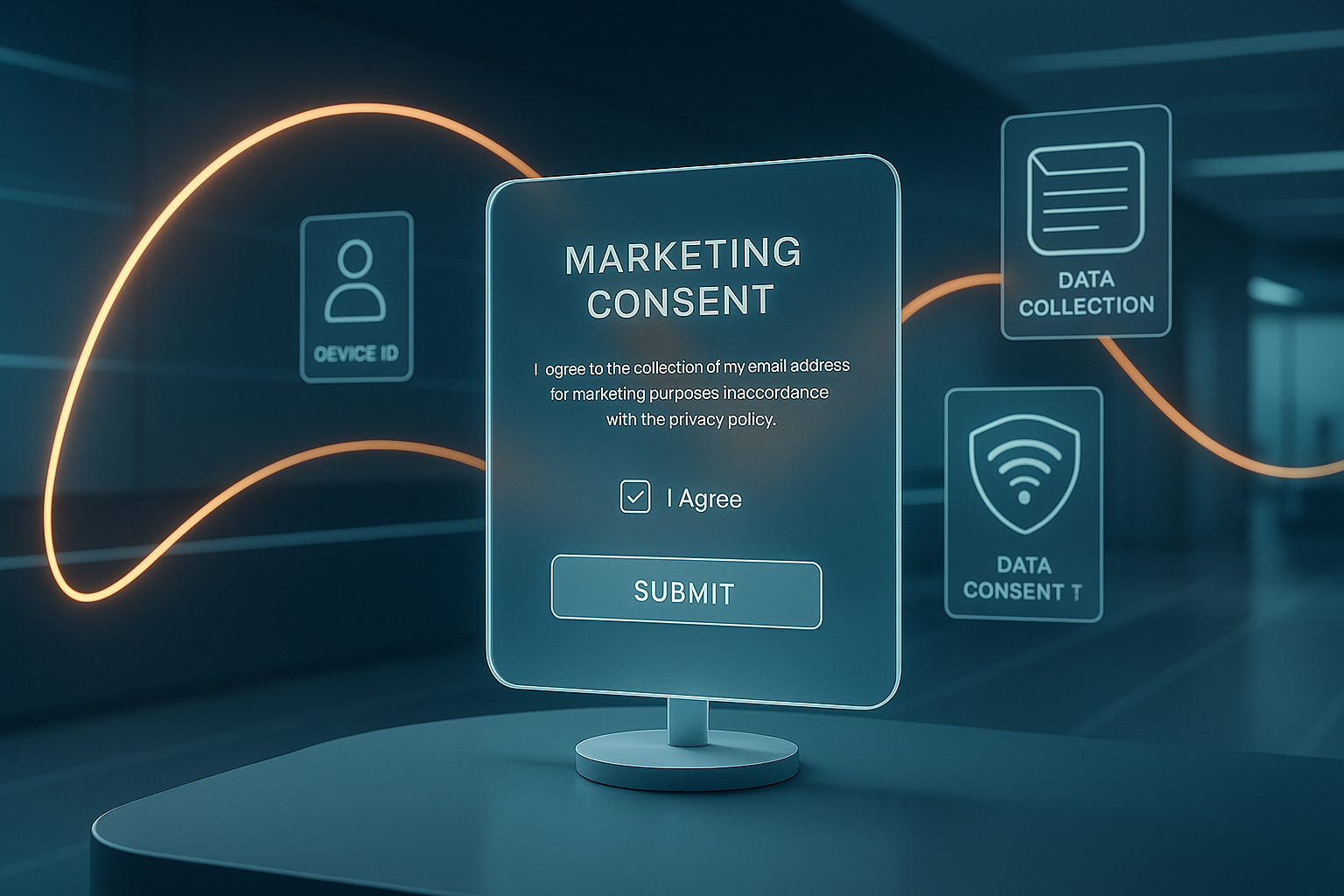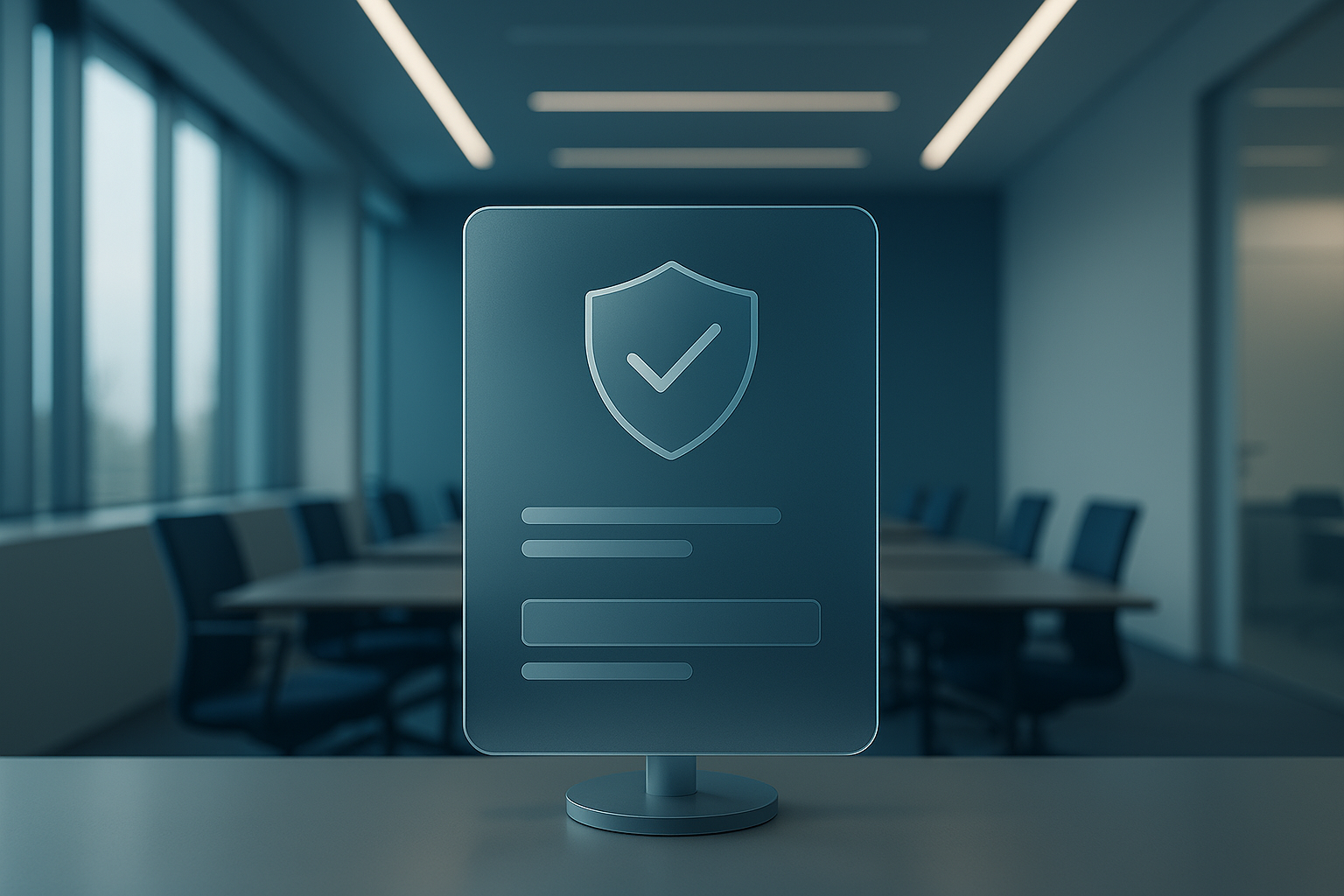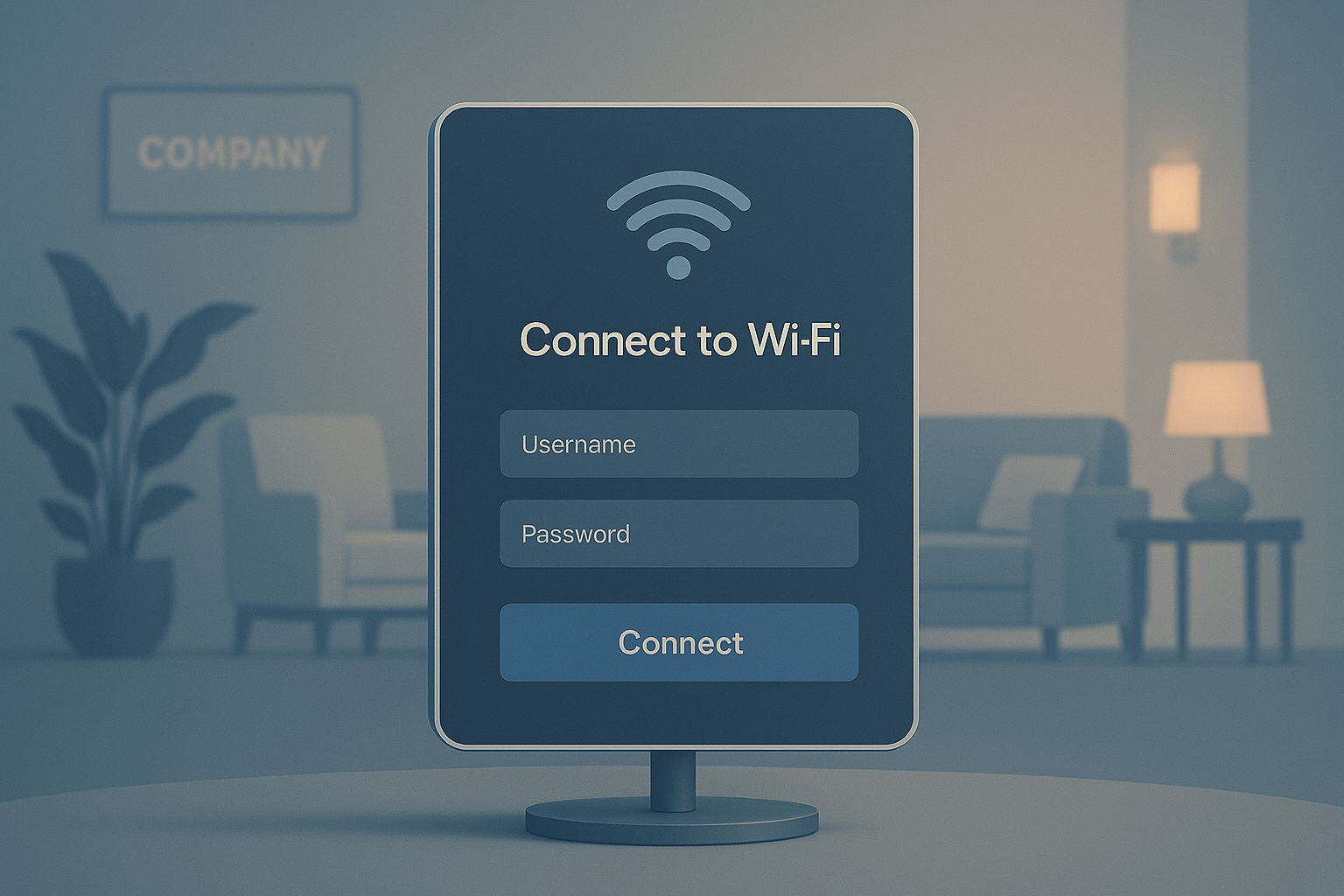Ten years ago guest WiFi was simple. Walk into a café, tap Connect, boom - internet. No GDPR compliance forms, no captive portal checkboxes, no data collection legalese.
That era is over. In 2025, every WiFi login is a regulated event. A simple connection yields personal data - email, device ID, IP, timestamps. Laws like GDPR and CCPA decide what you can collect, how you store it, and how fast you must respond when something goes wrong.
If you run guest WiFi for a manufacturing facility with daily visitors, a hotel welcoming international guests, or a wine cellar bistro collecting emails for your newsletter - you're operating compliance-critical infrastructure. This shift came from two converging forces: high-profile breaches that normalized privacy anxiety, and global regulations that turned "nice to have" policies into hard requirements with actual penalties.
Here's what most operators miss: done right, compliance isn't a tax on convenience. It's how networks earn trust and collect valuable marketing data legally.
What is GDPR Compliant WiFi?
A GDPR compliant captive portal collects guest data legally through explicit consent, clear purpose disclosure, and proper data handling. Your splash page must explain what data you collect (email, name, device ID), why you need it (access, marketing), how long you keep it, and give users real choice about marketing consent. This means separating mandatory access from optional marketing, validating emails to build quality lists, and maintaining audit logs proving consent.
GDPR for Captive Portals: What You Need to Know

GDPR changed WiFi data collection forever in 2018. The EU regulation established that any data identifying a person - including IP addresses and device identifiers - is personal data requiring protection.
Maximum penalties reach €20M or 4% of global turnover, whichever is greater. By March 2025, European authorities had issued over 2,200 fines totaling approximately €5.65 billion. The largest single fine - €1.2 billion against Meta - proved regulators aren't bluffing.
CCPA followed in California with similar obligations. As of January 2025, fines range from $2,663 to $7,988 per violation, and they stack per affected person. CPRA eliminated the automatic 30-day cure period, making enforcement immediate.
Why captive portals specifically? Because splash pages routinely collect:
- Device identifiers (MAC addresses)
- IP addresses and session metadata
- Email or phone for login
- Names and profile fields
- Marketing consent preferences
If you're collecting emails for Klaviyo, capturing visitor information for your CRM, or building a marketing database through WiFi - every field on your splash page falls under GDPR.
Core GDPR requirements for captive portals:
Explicit consent before collection. Users must actively opt in. According to GDPR Article 7, consent must be freely given, specific, informed, and unambiguous - making pre-ticked checkboxes non-compliant.
Clear purpose disclosure. Your splash page must explain what you're collecting and why. "To send you our newsletter" is clear. "For business purposes" isn't.
Separate consent for marketing. WiFi access and marketing consent must be unbundled. Users should connect without subscribing. Bundling them violates GDPR.
Email validation. Fake emails defeat marketing purpose and create compliance headaches. Validated emails ensure quality lists.
Data minimization. Only collect what you need. A wine cellar bistro probably needs first name, email, and marketing consent - not postal address or phone number.
Geographic storage. EU visitor data should stay on EU servers. This matters for international venues.
Retention limits. Define periods: typically 30-90 days for WiFi logs, longer for marketing lists with documented consent.
User rights response. Be ready to provide, correct, or delete data within 30 days when requested.
Organizations with a data protection officer (DPO) should involve them in reviewing configurations. Your privacy policy should be clearly linked from your splash page, and terms and conditions should specifically address data handling.
The Marketing Consent Challenge
Here's where most operators get confused. You want emails for marketing. GDPR says consent must be freely given. How do you collect marketing emails without violating compliance?
The compliant approach:
Use a two-step flow or single screen with optional marketing consent. First, users agree to basic data collection for WiFi access (this can be mandatory). Then, they optionally opt into marketing (this cannot be mandatory in GDPR regions).
Spotipo handles this through flexible consent screens. You can use our GDPR Consent screen for a two-step flow, or add a consent field to your email login screen for single-page collection. Either way, the marketing checkbox starts unticked, and users can connect even if they decline marketing.
What you cannot do in GDPR regions:
Make marketing consent mandatory for access. Pre-tick marketing consent boxes. Bundle WiFi access with newsletter subscription. Hide consent language in terms nobody reads.
What you can do:
Collect validated emails for access (mandatory). Offer marketing opt-in with clear value proposition (optional). Export opted-in contacts to Klaviyo, HubSpot, Mailchimp automatically. Track consent status per user for audits.
For high-compliance industries, consider implementing double opt-in email verification, where users confirm their email address before accessing WiFi. This provides additional protection and ensures higher quality marketing lists.
Real customer example:
A wine cellar bistro wants guests to fill out: First Name, Last Name, Email, Country. They want a checkbox (unticked by default) saying: "I agree to receive information about products and services."
Compliant setup in Spotipo: Email login screen with four required fields for access. One optional consent field for marketing. Email validation turned on. Klaviyo integration pushing all data including consent status and country. Marketing checkbox unticked by default.
Result: 40% marketing opt-in rate, 100% GDPR compliant, zero friction for guests who just want WiFi.
Implementation Guide: Make Your WiFi GDPR Compliant

Step 1: Audit what you're collecting
Manufacturing facility with visitor WiFi: You probably need name and validated email. You might want company name and visit purpose. You don't need birthdates or phone numbers.
Hotel with international guests: Name, email, room number, country. Optional marketing consent for promotions.
Wine cellar bistro: Name, email, country for newsletter. Visit date for targeting.
Only collect what you'll actually use. Every extra field is more compliance burden.
Step 2: Configure your splash page for consent
Choose single screen for simplicity or GDPR screen for clarity. Add required fields (name, email). Add optional marketing consent with clear value: "Get 10% off your next visit" works better than "Receive communications."
Enable email validation so fake emails bounce. Set appropriate language (Spotipo supports multiple languages).
Whether you're running UniFi, Cisco Meraki, or MikroTik hardware, Spotipo provides compliant captive portals that integrate with your existing infrastructure without firmware modifications.
Put plain-language notices above consent checkboxes. Use clear "I agree to receive..." language (no vague terms). Separate from WiFi access (users can decline and still connect). Everything gets logged with timestamp for audits.
Step 3: Set up marketing integrations
Connect Klaviyo, HubSpot, or your ESP. Map fields (first name → Klaviyo first name, consent → Klaviyo consent status). Test with dummy data before going live.
Spotipo integrates directly with major platforms. Every captured email exports automatically with name, email (validated), country or custom fields, marketing consent status (opted in or out), and connection timestamp. Your Klaviyo segments can filter by consent status. You never email someone who declined. You maintain audit trails proving consent.
Learn more about email validation features and how WiFi analytics help you optimize splash page conversion rates.
Step 4: Configure data handling and retention
Encrypt in transit and at rest. Restrict access with role-based permissions. Keep EU data in the EU with region-aware hosting. Default to data minimization: 30 days for basic logs, 90 for analytics, custom where documented.
Automate deletion at period end so data doesn't accumulate. Set retention once in Spotipo, deletion happens automatically.
WiFi logs: 30 days is reasonable for troubleshooting. Marketing contacts: as long as they stay opted in (but monitor for inactive contacts). Consent logs: keep for audit purposes (3-5 years typical).
Step 5: Enable user rights management
Be able to find (email/device lookup), export (machine-readable), and erase (complete deletion including backups) quickly. Track and close requests within legal deadlines - typically 30 days GDPR, 45 days CCPA.
Spotipo's dashboard includes search, export, and erase from one screen without SQL queries. Search by email or device across all sites, export complete history in CSV format, or permanently delete all records including backups. Compliance requests handled in minutes, not hours.
Step 6: Train your team
Staff should know: How to handle guest questions about data collection. Where consent language is documented. How to process deletion requests (or that they should forward to you). Why pre-ticking boxes isn't allowed.
Step 7: Monitor and update
Review splash page quarterly. Are you still collecting only necessary fields? Is consent language still accurate? Are integrations working?
Spotipo tracks authentication success rates and shows where users drop off. If completion rates fall, your form might be too complex. We handle automatic compliance updates - when regulations change, we push updates across all networks. You get notifications, but maintenance happens automatically.
Common Myths Debunked
Myth: "I can require marketing consent for WiFi access."
Reality: Not in GDPR regions. Access and marketing must be separate.
Myth: "Pre-ticking the box is fine as long as users can untick it."
Reality: GDPR requires opt-in, not opt-out. Box must start unticked.
Myth: "I don't need to validate emails."
Reality: Fake emails waste marketing spend and create deliverability problems. Validate.
Myth: "Small businesses don't need to worry about GDPR."
Reality: GDPR applies regardless of business size. One complaint can trigger investigation.
Myth: "Terms and conditions count as marketing consent."
Reality: Marketing consent must be separate, specific, and informed. Buried terms don't count.
Learn more about common GDPR myths for guest WiFi.
Why This Matters for Your Business
Compliant WiFi marketing isn't just about avoiding fines. It's about building a quality marketing list.
Spotipo customers running compliant splash pages see:
35-45% marketing opt-in rates (vs 60%+ with non-compliant mandatory consent). Higher email open rates (people who chose to opt in actually read emails). Lower complaint rates (nobody forgets opting in). Better sender reputation (validated emails, engaged subscribers). Zero compliance headaches (automatic consent logging and data management).
The manufacturing company welcoming visitors builds a prospect list. The hotel captures guest emails for loyalty programs. The wine cellar grows its newsletter while customers sip Pinot.
All compliant. All effective. All automated.
See how hospitality businesses use compliant captive portals and review case studies of successful implementations.
Looking Ahead

Regulations tighten, not loosen. The EU AI Act adds requirements for automated decision-making. CCPA continues expanding. More countries adopt GDPR-style frameworks.
The European Data Protection Board continues issuing guidance on consent mechanisms, cookie policies, and cross-border data transfers - all affecting how you run compliant captive portals.
Staying compliant manually becomes impossible at scale. Platforms that automate consent management, data routing, retention policies, and rights requests become essential infrastructure.
The alternative is constant manual work: updating splash pages for regulatory changes, managing deletion requests in spreadsheets, hoping your consent logs hold up in audits. That doesn't scale.
Start with Compliant WiFi Marketing Today
Guest WiFi should build your business, not put it at risk. With the right platform, you collect validated emails, grow your marketing list, stay compliant, and focus on serving customers instead of worrying about regulations.
Spotipo handles GDPR compliance, marketing consent, email validation, and CRM integration out of the box. Whether you're running a manufacturing facility visitor network, hotel guest WiFi, or bistro hotspot - we make compliant data collection simple.
See compliance in action:
✓ Configure splash pages with proper consent checkboxes
✓ Test email validation and marketing opt-in flows
✓ Watch guest data flow to Klaviyo with consent status
✓ Search, export, and delete user records for compliance
✓ Deploy on UniFi, Cisco, MikroTik, or any hardware
Start your free 14-day trial - no credit card required, full platform access, unlimited test sites. Set up your GDPR-compliant splash page in minutes and see exactly how guest data flows to your marketing tools with proper consent tracking.







